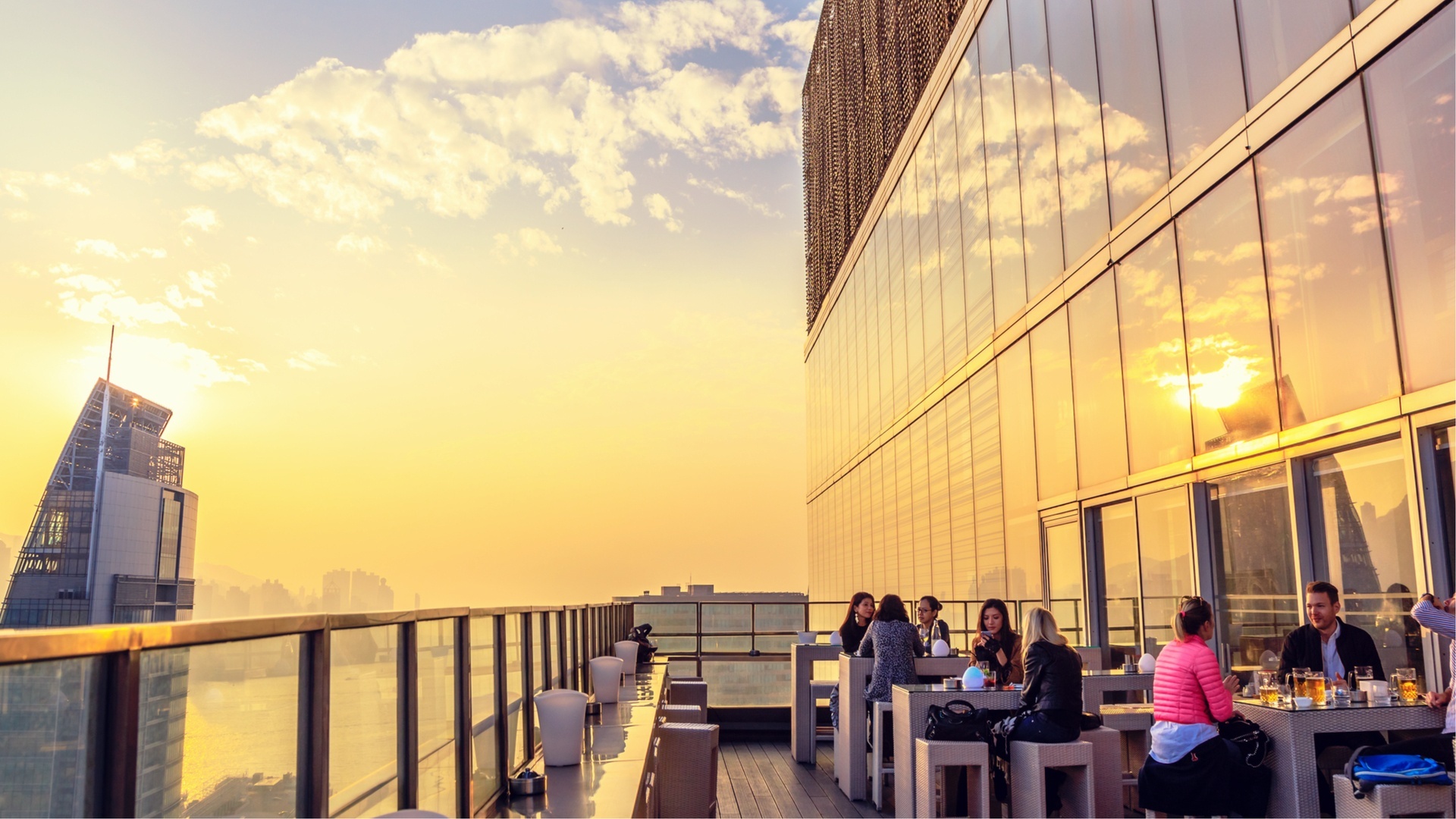As the multifamily landscape shifts, developers and architects look to stay in tune with the trends. Tenants are sacrificing unit area for a far more attractive and functional outdoor living space; the rooftop amenity. In this post, a continuation of part 1 of 6 things architects must know about rooftop amenities, we outline the next three important considerations for incorporating a rooftop amenity in your next multifamily project.
4. THE MATERIALS
As in all architecture, the materials used on a project have a tremendous impact on the aesthetics, performance, budget, support or structure maintenance and longevity of a building. In landscape architecture and rooftop amenities, materials are just as important.
Concrete and wood are the two most common materials used on rooftops. Also, and more frequently, architects are choosing recycled plastics as they are cost-effective and require little to no long-term maintenance.
Concrete: Many architects and developers choose concrete because it is cost-effective, durable and can easily meet any building and fire codes. Also, concrete can handle heat and cold well. On the aesthetics side, a wide array of colors and textures are available; there are even some newer products that are softer on the feet. When you compare it with wood, it has greater longevity and less cost and maintenance.
Wood: It is beautiful and easy to work with. It is the gold standard of materials and it absorbs less heat than concrete. Despite the pros of concrete, many architects still choose to use wood as their primary decking material, or a combination thereof, largely because of the aesthetics and the overall experience. Rooftop amenities raise the outdoor living standards of those who occupy the building. Aside from lounge areas, there are also gardens, trees and planters using wood which adds a more natural feel.
5. THE MAINTENANCE
A top priority question architects ask us about rooftop amenities refers to maintenance. Are rooftop amenities high maintenance?
It really comes down to good design detailing and good installation. The most important aspect of designing a rooftop deck in any setting – urban, suburban, or rural – and the most frequent cause of problems, is proper management of water, whether it falls from rain or snow, or you introduce it by way of atomatic irrigation systems. Proper drainage is a must. Once water hits the roof… where does it go? How many times do you have to penetrate the roof surface and substrate to get the water to where it needs to go, and away from where you don’t want it?
Rooftops are much harder to access than traditional ground floor spaces, thus leveraging materials and techniques to keep maintenance to a minimum is vital to prolong longevity of the roof and the amenity. You want to ensure your landscape architect understands how to properly detail all the roof components in such way that your contractors can properly install the various surfaces to mitigate the positive and negative effects of water.
An additional maintenance issue is access for maintenance crews, equipment, etc., because of what floor it is on, and that it is not at street level. Careful planning of turf areas can help solve this problem.
6. THE LONGEVITY
With innovative design, proper installation and regular maintenance, a rooftop amenity could last as long as the building. Also, if the roof allows for it, a rooftop amenity should be fully functional year round. Although commodities like BBQs and furnishings might need to be replaced or refreshed over time, the structure of the outdoor living space should remain constant throughout the years, yielding high return on investments.
CLOSING THOUGHTS
As the arm race for better amenities gets more competitive, architects must keep the edge on their multifamily projects. It is crucial to conceptualize your amenity early into the design process. This way you will avoid back paddling, and guarantee a positive ROI for your developer clients.
